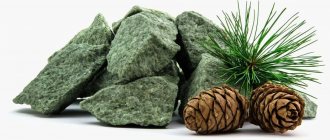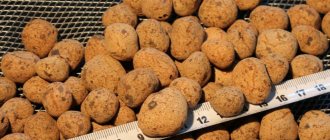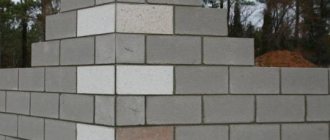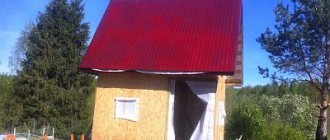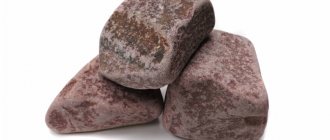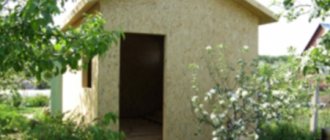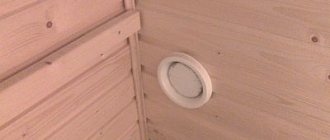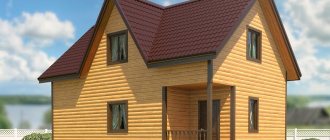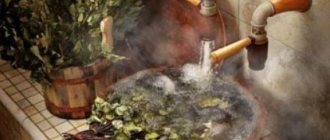Soapstone for baths
The same characteristics of stones are widespread on the Internet, which simply wander from one site to another, without bringing any clarity or certainty about what exactly is being offered to the buyer.
For example, a standard statement about soapstone will certainly mention “soft heat”, “high heat capacity” and add something about the beneficial effect.
If this doesn’t seem enough, your imagination kicks in , and now the stones, at the will of the author, begin to release vitamin D. All this, with a big stretch, can be considered information.
Therefore, we decided to fill the gap and give an objective picture of what soapstone is for a bathhouse. Here we will talk about its properties and its use in a heater; if you are interested in cladding, then we have a separate article about this.
Soapstone for baths: properties
This is a complex mineral in its structure, the main part of which is composed of magnesium, aluminum and silicon compounds, and there are iron and calcium salts. In soapstone chlorite, all this wealth is represented by an interweaving of thread-like and layered structures interspersed with chlorite, pure quartz and talc. The chemical formula looks like this.
The presence of silicon, aluminum and magnesium in the composition determines good heat resistance
The classic color of the mineral is usually gray, sometimes with beautiful bluish and greenish tints. It is this soapstone tile that is most often chosen for cladding walls and bathhouse stoves. In solid wood, this finish resembles marble.
Soapstone is rarely polished, but after special treatment and impregnation it can easily be confused with marble
Often they try to paint polished soapstone slabs, trying to pass them off as more expensive jadeite and jade. This option can be implemented for individual fakes and carved decorations on the fireplace, but it is clearly not suitable for the interior decoration of a bathhouse.
The most interesting properties of soapstone for using stone in bath decoration:
- Due to inclusions of talc, the mineral turned out to be quite soft, its hardness ranges from 1 to 5.5 Mohs units. Therefore, during the preparation process, soapstone tiles for a bath are easy to cut and adjust to the required size;
- Relative chemical inertness, the lining of the stove and bathhouse walls, even with direct contact of the tiles with hot metal or an open flame, does not emit any harmful or toxic compounds;
- High melting point. To destroy soapstone chlorite, the tile must be heated to 1640°C, which is much more than the metal and brick base of the oven can withstand. For a bathhouse, this is also a good way to protect wooden floors and walls from the hot parts of the firebox and heater;
- The heat capacity of soapstone chlorite is 0.98 kJ/kgC, which means that the tile lining can give off heat for a long time, effectively drying the bathhouse from accumulated water and condensate;
- High thermal conductivity, on average 5-6 W/mC, which is 5-7 times more than that of solid red brick, and an order of magnitude less than that of cast iron and stainless steel.
It was the successful value of thermal conductivity that caused the growing popularity of soapstone chlorite. Lining the steel walls of the furnace with soapstone tiles provides the most comfortable level of heat dissipation. As a result, the sauna stove turns out to be quite economical, since the heat does not escape into the chimney with the products of burning wood, and at the same time powerful, but not scalding.
The firebox lining guarantees safe operation of the stove in the bathhouse
Important! Another property has become the reason for the active use of soapstone in finishing bathhouse stoves. This is a low rate of thermal expansion, its value does not exceed 0.001% for each degree of heating.
This means that the tiles will not crack or peel off on the surface of the oven during high heat or even during thermal shock - pouring boiling water over a hot mineral.
Field
Stone is used in many fields
The largest number of developed mineral deposits is located in Finland. Their number today is more than a hundred. The largest of them are located in the eastern part of Finnish territory, where mining has been going on since the time when the country was part of the Russian Empire.
The world's leading deposit in terms of the quality of minerals and quantity of reserves is called Nunnalahti, where the bulk of the mineral is mined.
Soapstone deposits exist in Russia, and there are also mineral reserves in America, India and Brazil. The most studied are considered to be rock deposits that originate in Finland and pass through the territory of Karelia. Part of the soapstone rock in Russia is mined in the Urals at the Shabrovskaya deposit, located in the Sverdlovsk region.
Advantages and disadvantages of soapstone
The attitude of lovers of strong steam towards the use of minerals in the bath is twofold. On the one hand, soapstone has established itself as a practical and easy-to-use material, especially for modern metal furnaces. On the other hand, there are certain nuances in using soapstone that need to be taken into account before covering the floor and walls with the mineral. You can, of course, judge the advantages and disadvantages of soapstone for baths based on reviews, but it would be useful to get acquainted with the positive and negative sides from the practice of using the material.
Advantages of using the mineral
Soapstone really has a lot of positive qualities. For example, tiles are often used to cover the floor and shelves in a steam room; it is believed that in this way one can effectively warm up and treat radiculitis and inflammation of the back muscles.
A floor lined with soapstone tiles is not slippery, and moderately high thermal conductivity makes it possible to effectively use heating with an electric cable, both in the dressing room and in the washing compartment.
If soapstone tiles and torn stone are used to decorate the walls of the bathhouse, then the atmosphere inside such a room is considered lighter and more pleasant to breathe, even at a high level of humidity. There is no scientific explanation for this, but, according to some reviews, bath stones made of soapstone make the steam not as hot as when using a quartzite heater backfill.
Another significant advantage is that soapstone lining is easy to wash and clean, even if the so-called soapstone in the form of torn stone is used. Sanded and smooth material can generally be washed in a bathhouse using a high-pressure manual car wash, and neither the color of the tile nor the reliability of its fastening to the stove or floor is affected.
Disadvantages of using soapstone tiles
In open sources you can find a lot of negativity about the mineral. Experts often claim that when heated, tiles can emit sulfur dioxide or very light and therefore volatile microdust, which has a strong irritating effect.
Important! The first claim is true for tiles made of low-grade mineral. If inclusions and veins of a golden-yellow or greenish hue are observed in the stones, then it is better to avoid using the material.
The only serious drawback of soapstone tiles is the low hardness of the mineral. This means that the material wears out quickly under abrasive load. In a private bathhouse, the tiles on the floor will withstand at least 7-8 years of use; the flooring in public bathhouses and the stones in the backfill must be changed every three years.
What you need to know
To increase the service life of the masonry, it is necessary to care for it. Each element is checked for integrity and cleaned; if chips or damage to the surface are detected, it must be replaced with a new one. If you frequently use essential oils in a steam room, you should periodically remove carbon deposits from the stones. It should also be noted that soapstone for baths can only be purchased at special points of sale, since stones collected independently can release substances harmful to health when heated.
Use of soapstone in a bath
The mineral is used in the steam and washing sections of the bathhouse in three versions:
- For backfilling the heater;
- For lining a stove or fireplace in a bathhouse;
- Decorative material for finishing and protecting walls and floors.
The main value of soapstone is that the material, even with strong heating and constant watering with boiling water, does not burn or change size. This means that the hot steam will always be clean and odorless. Few people pay attention to the second quality, but it may be even more important than the first. The constant size means that a pile of hot stones, even after repeated calcination, will not collapse and create a dangerous situation, as is often the case with river pebbles or gabbro.
A popular tile option with a torn surface texture
Good thermal conductivity makes soapstone tiles an ideal material for facing and lining furnaces. In addition to the fact that finishing greatly improves the appearance of a red brick stove, mineral finishing also increases the reliability of the masonry.
Many owners of steam rooms even order the interior decoration of the bathhouse with soapstone tiles. It is generally accepted that the heated stone emits soft infrared heat and is capable of treating the respiratory system and musculoskeletal system, similar to salt fireplaces and lamps. And the cladding can be very beautiful if it is done by a professional.
Impact on the body
The fiery mineral has a positive effect on the human body:
- helps in the fight against colds and viral diseases, strengthening the immune system;
- increases concentration and attentiveness;
- lowers high blood pressure in patients with hypertension;
- its warmth helps mitigate the effects of osteochondrosis and radiculitis.
There is an opinion that soapstone helps strengthen the musculoskeletal system due to the release of vitamin D from the firestone. This hypothesis has not been scientifically proven.
How to choose soapstone for a bath
Firstly, you need to pay attention to the uniform color of the mineral texture on the fracture or treated surface. There should be no black, yellow or green foreign matter on the stone or tile. As a rule, these are salts of heavy metals, many of which are toxic or even poisonous.
This is a coil, a beautiful stone, but not the most harmless, it is better not to use it for a bath
This is what the best soapstone for a bath looks like, gray, with a slight touch of talc
If you select a mineral for backfilling a heater, it is best to take rolled material in the form of oval-shaped pebbles. In this case, boiling water penetrates deep into the poured layer, and accordingly, the steam release is more complete. In addition, due to the high talc content, stones with broken and torn surfaces emit dust, which is harmless, but can accumulate inside the bathhouse.
If you select tiles, then, in addition to uniform color, you need to pay attention to the absence of cracks and microchips. Most likely, such a stone was processed in violation of the cutting technology or temperature conditions.
Replacing stones
Nothing in this world lasts forever and no matter what amazing properties a stone has, over time its service life in the heater will end.
In my stone backfill, the stones heat up to scarlet colors. Have you ever heard the popping noise made by evaporating water from the surface of stones?!
All this does not go unnoticed even for soapstone; over time, its structure becomes porous, and the stone begins to crumble.
Small crumbs clog the air channels, and the draft in the oven decreases. Less draft means the stove heats worse.
Periodically, the stones need to be sorted out, replaced, and the stone backfill itself needs to be cleaned.
Soapstone tiles for baths
When laying the material, first of all, you need to pay attention to the place where the tile cladding will be laid. The density of soapstone is quite large, so it would be correct to first calculate the weight of the future finish, and only then decide how much such tiles can be used for laying on the walls of a bathhouse.
Wall and floor cladding
When decorating the interior of a bathhouse, the choice of tile size and thickness is determined by the thermal and hydraulic load. For example, the surface of wooden walls around the stove is finished with small tiles with a torn or, more often, smooth surface. The thickness of the material usually does not exceed 15-20 mm.
The same soapstone can be used to line all rooms of the bathhouse, with the exception of the washing and steam rooms. For steam rooms and sinks, large slabs are used, since there are fewer seams, which means the risk of water flowing under the cladding is reduced.
Lining furnaces with soapstone
The body of the metal furnace is finished with massive blocks, at least 40 mm thick. Since metal expands greatly when heated, there is no point in trying to attach the slabs directly to the walls. On the contrary, an air gap is left between the stove body and the soapstone casing, with a width no less than twice the thickness of the cladding.
Brick sauna stoves can be lined with pin fasteners. The process is painstaking, but quite accessible to do it yourself. The material is actually suspended on the brick, and the seams are rubbed with heat-resistant silicone.
The slabs can be easily adjusted to size manually
DIY cladding
Finishing a steel sauna stove with soapstone slabs is no more difficult than laying out a protective casing made of brick. The main difference is that the material will need to be constantly trimmed and adjusted to size using a grinder and a cutting wheel. The material is soft, so craftsmen often simply sand the desired end with regular sandpaper.
The soapstone lining is laid out on the same foundation as the stove; if there is none, then you will need to dismantle the floor of the bathhouse, pour a concrete slab and lay out the surface with large blocks.
To lay the cladding, glue based on liquid glass and finely ground soapstone powder is used. After installing the slab with glue, it must be fixed in the masonry with spring clips and spacers, which are subsequently removed, and the marks are cleaned and rubbed with glue.
Review of the best models
Here are the market leaders for heating units for baths and homes.
| Model and manufacturer | Description and characteristics. Dimensions in mm (W, D, H) | average price |
| Oven "KASTOR KSIS 37,KSIS 37 TS". | The stove is capable of providing heat to a steam room with a volume of 27-37 m3. The diameter of the chimney outlet is 130 mm. Depending on the customer’s wishes, it is possible to provide a chimney outlet from different sides of the stove. The weight of the stove without stone laying is 135 kg, with the filling and with panels the stove weighs 240 kg. Stone weight – from 100 kg. Dimensions – 720/680/1056. | 85600. |
| Clover RT20. | Steam room with a volume of up to 22 m3. The cross-section of the ventilation pipe is 130 mm; the pipe exit can be provided from above or from different side surfaces. Minimum weight – 138 kg, with panels and stone laying – 170 kg. Dimensions – 576/576/916. | 52000. |
| Sauna heater “KASTOR Karhu 27 PK”. | Steam room volumes up to 27 m3. The cross-section of the chimney pipe is 130 mm. The mass of the stove without lining and stones is 72 kg. The total weight of the heater is 200 kg. Dimensions – 576/576/1056. | 64000. |
| Model "No. 06M2". | The cubic capacity of the steam room is up to 16 m3. Closed heater. Equipped with a remote firebox and a tank for heating water. Loading weight of stones – 90 kg. The kit may include a steam gun. The firebox is made of steel, 10 mm thick, its length is 650 mm. The diameter of the combustion chamber is 200 mm. Power 20 kW. The door is made of cast iron. Dimensions – 740/560/1270. Total weight 210 kg. | 150970. |
| Model "Klover RT50" | Building capacity up to 50 m3. The cross-section of the chimney pipe is 160 mm. The total weight of the heater is 320 kg. The mass of soapstone backfill and cladding slabs is 80 kg and 220 kg. Dimensions - 712/672/1283. | 97600 |
| Heating stove made of rough stone. | This design can decorate any large country mansion. The design uses a combustion chamber “Schmid Pano 6751” with a glass door that opens to the side. In the design of different dimensions, only soapstone imported from Finland is used. This material is the standard of cladding quality. | 400000. |
| Austrian fireplace "Austroflamm". | The fireplace is installed near the wall. The front side is made of semicircular shape, made of fire-resistant thick glass. Power 4kW. Dimensions – 433/417/986. The total weight of the oven is 149 kg. The main material of the walls and combustion chamber is heat-resistant steel. | 253000. |
| Hungarian fireplace - Acropolis stove. | Power 9kW. Total weight 270 kg, chimney outlet diameter – 150 mm. Dimensions – 870/510/1025. The door is made of fire-resistant glass. Its dimensions are 420/420 mm. Triangular shapes and balls are used in decoration. | 218000 |
| Baccara Novo. | Installed against the wall. The total volume of the room is 180 m3. Power 9 kW. Equipped with a secondary gas afterburning system. Closed firebox. Efficiency level – 80%. The burning time of the firewood stack is 10 hours. The door is made of glass. Dimensions – 616/586/1264. Total weight 320 kg. | 207000. |
Soapstone for baths: reviews
Vasily Alekseevich Belov, 61 years old, Vladivostok
It is better not to lay tiles on the stove with silicate glue, the seams will still crack. I assembled a steel frame around the box and attached the chalcopyrite slabs to the mesh with wire. I once laid tiles on the stove like this. The stone has been standing for two decades now. My neighbor's has already been re-laid with glue twice in the last five years.
Alexey Basnyansky, 43 years old, Ufa
The material is a bomb, but it’s better not to experiment, but to buy a ready-made set of soapstone cladding for a specific firebox model. There is no need to cut anything, everything is ready, even the corner elements and the window under the door - everything was done at the factory. True, the smell of such tiles is terrible, probably because of the paint; you need to burn it for a week to get rid of the feeling of burnt chemicals.
Recommended Posts
Bathhouse 2 by 2, 6 by 9, 3 by 4: log projects Mold
in the bathhouse: how to get rid
High-tech bathhouse, loft and chalet - designer solutions…
Bathhouse with gazebo
Lamps for the bath: for the steam room, for the dressing room, for the washing room
How to treat the outside of a log bathhouse
Operating rules
In Finland, such heating devices are the basis for obtaining heat in a country house. The front side opens into the living room or dining room. The rear part with the combustion chamber, hob and oven are installed in the kitchen.
We heat the stove as needed. Units equipped with an exhaust gas afterburning system allow you to add firewood no more than several times a day. Otherwise, the operation of such devices is similar to conventional heaters.
But don’t get carried away with firewood; the characteristics of the materials allow you to save fuel. If you constantly put firewood in the rooms, the heat will be unbearable. After lining, be sure to dry the stove by burning small amounts of fuel in the firebox.
